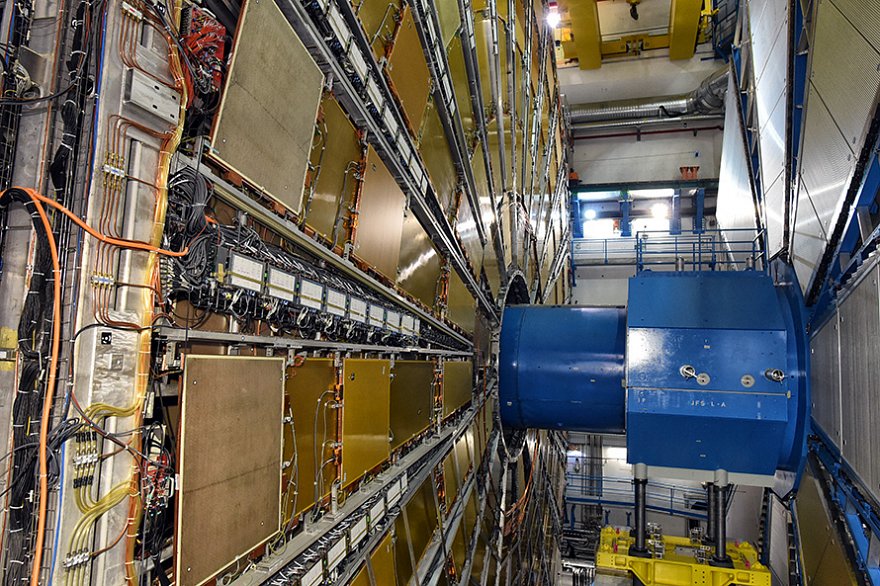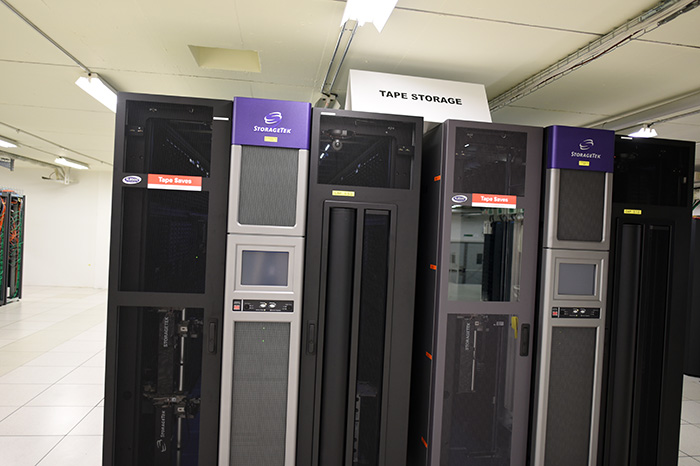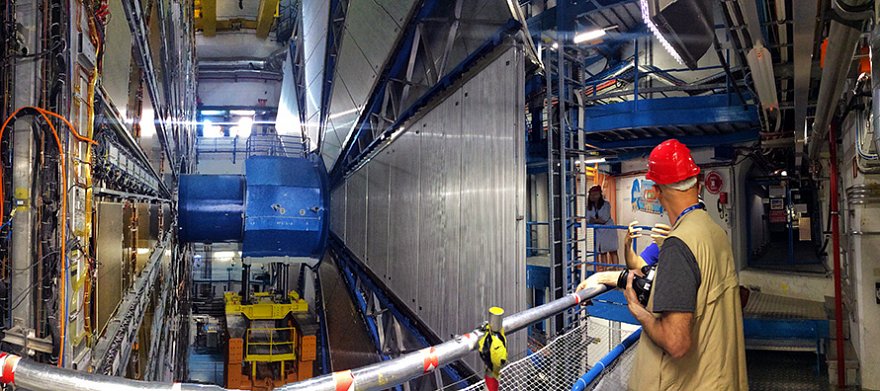
Having visited NASA’s JPL a few times, (and seen the Mars Rover before it made it’s historic trip,) I’ve had CERN at the top of my list of places on earth I’d most like to see. To me it’s an example of mankind at it’s best; thousands of scientists from over 100 countries, working together to unlock some of the secrets of our universe.
Funded by 22 member states, the original charter of CERN (it’sfull name is the European Organization for Nuclear Science) led it’s direction to non military and openly shared information. In fact, the World Wide Web began here, to freely share that data, and we can thank CERN that you and I are not paying a phone service type fee to see this very page, and all the web pages.
Lots of facts and some very big numbers, but let me start with my favorite of the experiments I visited: the antimatter decellerator - you have to love people who dare to mess with antimatter!

Where Have All the AntiFlowers Gone
Seeing the way the particle physicists here have done their wiring makes me feel much better about the mess of cables in my home studio.

So… From accepted formulas, we know that antimatter is created in equal parts with matter - so the question this huge lab is working on is; where is all the antimatter to match the matter that composes most of the universe.
Okay, let’s make some antimatter (by particle collisions) and take pictures of it to see what it does. As a photographer, I was surprised that the pictures they take are only 100 meg each - not a lot bigger than what our cellphones do. But, ah, here’s where the numbers start to boggle my mind: they take 40 million pictures a second of the particle collisions, and there are a lot of those collisions. Really a lot!
A caveat here: I’m giving the numbers as I recall them from my visit - regular visitors to my web diary know I sometimes even make mistakes about what cities I’m playing in… so you should visit CERN to be sure to have the right facts and figures.
Back to the anti particles - they’ve made a lot of progress here. Back in the ’80’s they ‘trapped’ some antiprotons and electrons. Hard to tell a lot about them because they’re moving so fast - so in the 90’s began a process of cooling them down to decellerate them. And, how about taking the Hydrogen antiproton and trying to combine it with a hydrogen antielectron and make a whole atom of anti-hydrogen, and, let’s see what that baby behaves like!
It’s been a long process and they’re still upping the methods, to capture more of the atoms and be better able to analyze them. You can imagine how after all these years of work, expertise and expense, if they figure out what it is about the behavior of antimatter that made it pretty much absent from the universe… well, our understanding of the origin of our whole universe will have taken a big leap, and… there’ll be a bottle of champagne to pass around!






Meet me at the Syncrocyclotron
The first accelerator here, back in 1957, has a massive name, Syncrocyclotron, but it’s quite small by today’s standards.



They’ve got a supercollider near Geneva, so big it reaches under France…
Those are some of the lyrics from “Soup”, one of our Stick Men songs we’ve been performing for years. And now here I am at the big boy itself… The Large Hadron Collider - the Atlas Experiment area of analyzing the results of high speed particle collision.
My guides for Atlas, Steve Goldfarb and Ludo Pontecorvo at the elevator that’ll take us down 300 feet below ground to where the action is.


I didn’t catch a look at the elevator buttons – 300 feet is a long way - I should have checked whether there were stops for home furnishings… men’s clothing… anti-appliances… Large Hadron Supercolliders…
Steve took a minute at a chart showing the different layers of detectors that analyze what happens with each particle collision. With 40 million packets of protons arriving each second, 100,000 million protons per packet… and the beams circulating for hours… I don’t think my camera would be up to the job!
There is a whole lot of data coming out of this experiment, and later I’ll visit the section where it’s all stored and shared.




The helmet is just so you don’t hit your head on something… no high speed particles are going to care about that thing! Coming here with a pacemaker, though, would be a pretty bad idea - a lot of this structure has giant magnets so powerful they need a huge cooling system to keep them from melting.
The collider in total, being 27 Kilometers long, makes this the largest machine mankind has built. You can take a ‘virtual tour’ of this same spot at: Atlas Virtual Tour
and of course, the web is full of much better details about all of CERN.
Heading into another section of it… you gotta love when you’re being taken into areas that say they’re forbidden. I don’t know what I did to deserve this treatment, but I’m loving every minute.

Let’s Go to the Video Tape
Like big numbers? The Atlas Experiment produces a petabyte of data each second. Not so much, really - just one petabyte. Ah, but it seems ‘petabyte’ is a thousand million million bytes… so yeah, a lot of data. Each second.
They have designed filters that let most of it go by and only stores the data that looks to be useful. (Total about 50 petabyes this year for the facility.) Anyway, storage of the data is a big issue, and I was surprised to find that they use good old tape for it. Well, not old tape, but the reliable magnetic tape that we used in the old days, both in music and computing.



They have rooms of stacks of tape units running. 11 other sites around the world for backup. It not only needs to be safely stored for near future use, but some of this data could be important for physicists far in the future.
I liked this monitor, showing the earth with lines showing in real time where data is being sent right now


I’ll Drink to That
In the control center, a lot of monitoring, as you’d expect (and as you’ll recognize if you’ve seen the movie “Particle Fever”, about the supercollider.)
Wish I could tell you that I understood this data

What I could relate to easily is the way they’ve organized their timeline of significant successes here at CERN…. by labelled bottles of the champagne served to celebrate.


You’ll notice the “Higgs Single Malt” which says “Massive in it’s Field”
So, that’s my ‘What I did on my day off’ diary entry! With big thanks to the people at CERN for giving me their precious time, I’ll head back to the airport, to fly to Prague and rejoin the band.
And if you’ve found the visit interesting, please keep in mind there’s tons more on the web, and that group visits to CERN go on all the time.
More soon from the King Crimson tour.
(And, thanks to Steve Goldfarb for the following picture)

